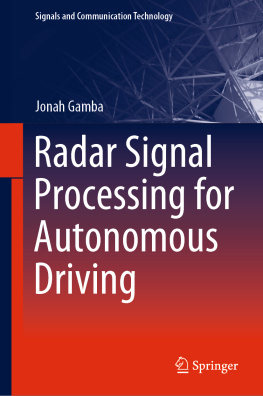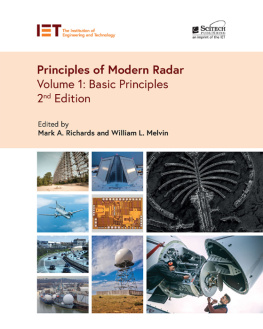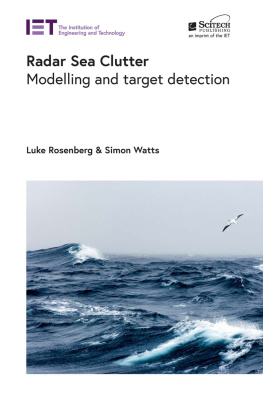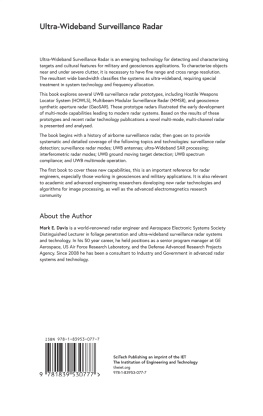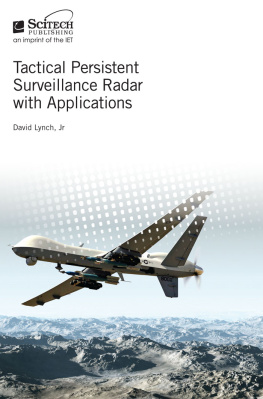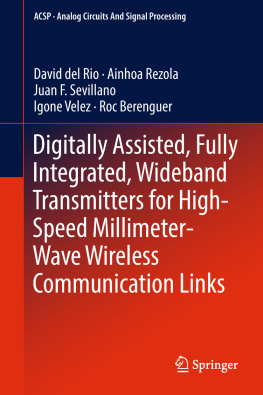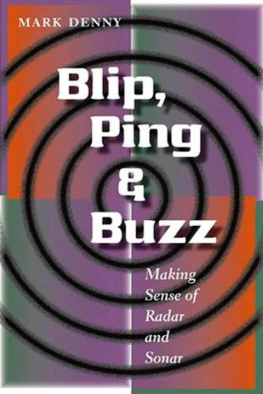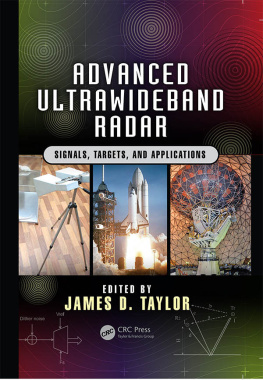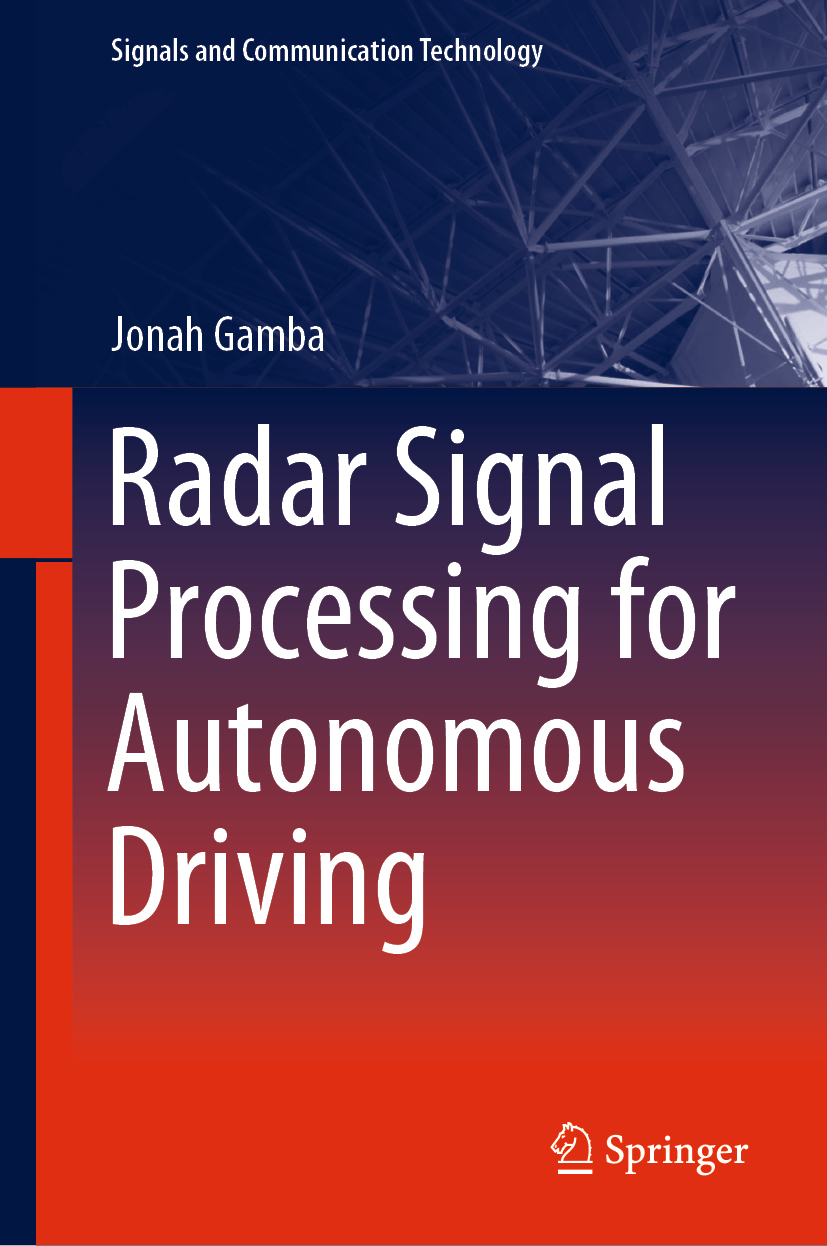Signals and Communication Technology
Series Editors
Emre Celebi
Department of Computer Science, University of Central Arkansas, Conway, AR, USA
Jingdong Chen
Northwestern Polytechnical University, Xian, China
E. S. Gopi
Department of Electronics and Communication Engineering, National Institute of Technology, Tiruchirappalli, Tamil Nadu, India
Amy Neustein
Linguistic Technology Systems, Fort Lee, NJ, USA
H. Vincent Poor
Department of Electrical Engineering, Princeton University, Princeton, NJ, USA
This series is devoted to fundamentals and applications of modern methods of signal processing and cutting-edge communication technologies. The main topics are information and signal theory, acoustical signal processing, image processing and multimedia systems, mobile and wireless communications, and computer and communication networks. Volumes in the series address researchers in academia and industrial R&D departments. The series is application-oriented. The level of presentation of each individual volume, however, depends on the subject and can range from practical to scientific.
Signals and Communication Technology is indexed by Scopus.
More information about this series at http://www.springer.com/series/4748
Jonah Gamba
Radar Signal Processing for Autonomous Driving
Jonah Gamba
Tsukuba, Ibaraki, Japan
ISSN 1860-4862 e-ISSN 1860-4870
Signals and Communication Technology
ISBN 978-981-13-9192-7 e-ISBN 978-981-13-9193-4
https://doi.org/10.1007/978-981-13-9193-4
Springer Nature Singapore Pte Ltd. 2020
This work is subject to copyright. All rights are reserved by the Publisher, whether the whole or part of the material is concerned, specifically the rights of translation, reprinting, reuse of illustrations, recitation, broadcasting, reproduction on microfilms or in any other physical way, and transmission or information storage and retrieval, electronic adaptation, computer software, or by similar or dissimilar methodology now known or hereafter developed.
The use of general descriptive names, registered names, trademarks, service marks, etc. in this publication does not imply, even in the absence of a specific statement, that such names are exempt from the relevant protective laws and regulations and therefore free for general use.
The publisher, the authors and the editors are safe to assume that the advice and information in this book are believed to be true and accurate at the date of publication. Neither the publisher nor the authors or the editors give a warranty, expressed or implied, with respect to the material contained herein or for any errors or omissions that may have been made. The publisher remains neutral with regard to jurisdictional claims in published maps and institutional affiliations.
This Springer imprint is published by the registered company Springer Nature Singapore Pte Ltd.
The registered company address is: 152 Beach Road, #21-01/04 Gateway East, Singapore 189721, Singapore
To Megumi, Sekai, Mirai, and the family
Preface
This book is a result of the painful experience of learning from scratch with little reference material directly dealing in a collective manner with the application of radar processing principles to automotive applications. Radar processing as a topic is well matured and has been around for decades. The main focus has been on military applications such as missile tracking and navigation. However, the arrival of non-traditional applications in the form of advanced driver assistance systems exposed the inadequacy of volumes of material already available on the topic. Therefore, a holistic approach starting from the basics to detailed aspects is necessary. Consequently, this book is meant to be the groundbreaker for such an approach providing the big picture to the interested reader on full range of radar principles required for the autonomous driving applications.
The subject of this book is theory, principles, and methods used in radar algorithm development with a special focus on automotive radar signal processing. In the automotive industry, autonomous driving is currently a hot topic that has led to numerous applications for both safety and driving comfort. It is estimated that full autonomous driving will be realized in the next twenty to thirty years and one of the enabling technologies is radar sensing. However, there are very few books in the market covering essential tools and methods necessary for the successful implementation of the processing algorithms. There is also no single self-contained text describing the full depth and breadth of the required foundation for building these applications making it necessary for both professionals and newcomers to gather information from multiple texts scattered in the literature. Our main intention in this book is to address the problem by presenting both detection and tracking topics specifically for automotive radar processing. It is meant to be a one-stop solution to the abovementioned problem.
The content given in this book is a result of several years of research and development experience in the automotive industry. Based on this experience, this book provides illustrations, figures, and tables for the reader to quickly grasp the concepts and start working practical solutions. A complete and comprehensive coverage of all the essential methods and tools required to successfully implement and evaluate automotive radar processing algorithms is presented. In addition, instructive references are given as a bridge to connect to the vast ideas that have been studied in the past. From the ideas, deep insights can be gained for tailoring particular methods to the autonomous driving applications. The chapters are organized as follows:
Chapter Fundamentals of Radar Systems . This chapter presents the basics of radar systems. It also describes the importance of antennas to radar systems. In addition, it gives an overview of current automotive applications where radar systems are increasingly being incorporated. Automotive radar processing will be the main focus of this book.
Chapter The Radar Equation . This chapter introduces the radar equation which is essential for understanding the effects of propagation on the transmitted radar signal. It outlines the effect of propagation losses on the maximum detectable range. This is illustrated by an example with typical automotive radar parameters.
Chapter Signal Processing for Radar Systems . This chapter introduces key ideas behind signal processing of received radar signal. It deals with Fourier transforms and their applications to radar signal processing. It also gives a wide coverage of window functions that are typically used in processing radar signals. Extension of these concepts to two-dimensional processing is concisely presented.
Chapter Radar Waveforms and Their Mathematical Models . This chapter deals with various radar waveforms derived from the frequencies that are used in target detection and localization. Waveform design is a critical part of automotive radar development. Depending on target range, velocity, and angle, the waveform can be chosen carefully to meet the requirements. Among the waveforms, FMCW and fast chirp ramp sequence are explained with illustrations. The essential mathematical relations that affect radar performance are given. The effects of parameter selection are also considered.

